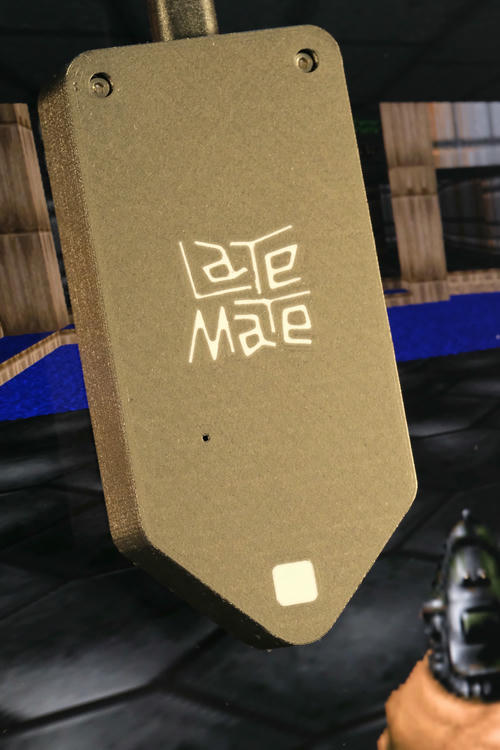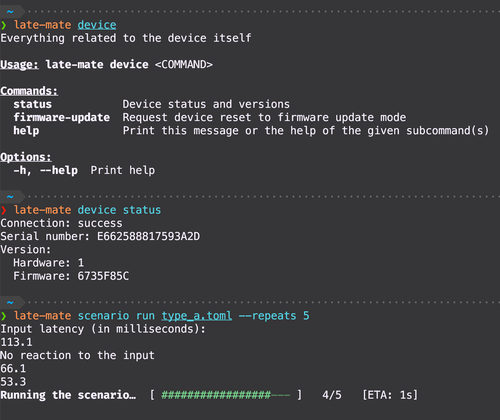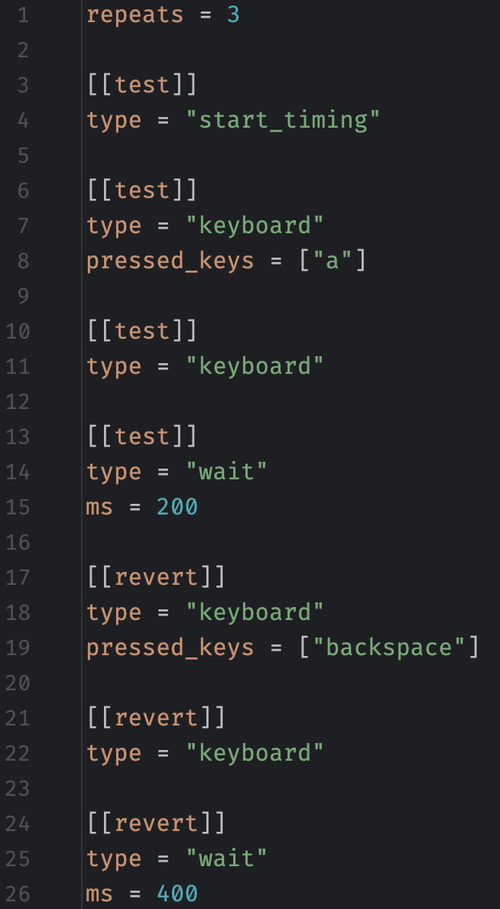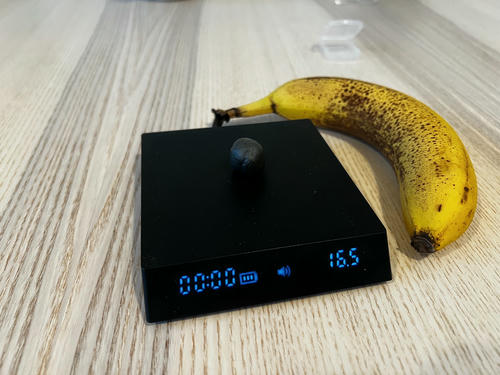Big Late Spring Update
(Yes, it's a bit late, it's in the name)
Dan here with an update. It's a chonker, so here's a short overview before you delv… dive in:
- Future of Coding appearance
- The Big Plan
- Funding
- Team Changes
- New Landing
- Bonus Photos
- Big Rewrite
- Device Validation
- Gaining Weight
- Mascot

(credit)
Things are moving!
Future of Coding appearance
I made a demo at my favourite London meetup, Future of Coding London:
Few communities channel the creative, demo-forward London scene energy better than the FoC meetup. Say hi if you come to the next one!
The Big Plan
I talked a bit about the Big Goals in the new landing page video (more on this later), but here I want to tell you all a bit more about the Big Plan.
To start a startup, one has to be a bit delusional. I'm just delusional enough to start, but not enough to think that launching an end-user device will force every company on the planet to make and keep their interfaces snappy.
The only way to keep computers snappy is to sneak into release testing pipelines and to stay there.
In other words, to change personal computing forever, I need to make latency testing continuous and automated. I need to build a CI SaaS. This is the endgame and a very nice place to be as a business! But to get there is to thread a very fine needle. Here's how I'll thread it:
Step 1: Late Mate campaign and general availability of the input-to-photon device
Step 2: Late Mate v2, measuring the delay between a simulated input and a video output frame
Step 3: Late Mate CI, using v2 hardware
Every step builds on top of the previous one, and every step is hard. But hey, remember what I said about being a bit delusional?
Funding
One thing I learned really fast starting this up is how everything startup is one big chicken-and-egg omelette! Improving the product requires focused work, focused work requires paying the rent, paying the rent requires sales, sales require having a product and marketing it, marketing is easier when the product is already great, GOTO10.
But then I realised I should just reach out and invite people to pitch in. Late Mate is my moonshot, a bet on a few rocks starting an avalanche and flipping the industry into a new, better state. I know that some people love and look for endeavours of this sort. Some of you might be the people.
If you are, let's talk. Ping me at [email protected], and let's change every computer out there, together.
Team Changes
Since the last update, we had a reshuffle. I (Dan) switched to working on Late Mate full-time several months ago, and Niki decided to spend more time on his other projects. The number of projects Niki is juggling is truly inspiring. Right now, I'm using his Fira Code! I'm deeply grateful for Niki's Late Mate contributions, and looking forward to our future collaborations. Love you, Niki ❤️
New Landing
Late Mate got a new landing:

The latency demo on top of the page was a shower idea. Showing is better than telling, and I can replicate my favourite typing experiences with a bit of JS. It is a reminder of how annoying computer inputs can be, and I hope you enjoyed it.
The latency demo was quick and fun to make, unlike the video at the bottom of the page.
It took four rewrites and reshoots to get to a satisfactory script and delivery. With the first three attempts, I went for natural delivery, but my test audience complained that it's boring and unnatural. Then I switched to the deep-fried, jump cut-rich, clippy style native to YouTube, and the test audience complimented it as natural and engaging. That's when I learned how strongly media sets expectations, and that I have to follow along.
(This is why this update is so long, newsletters are expected to be long, right?)
With the script nailed, I made every beginner mistake possible:
- I used natural light, which was changing while I was recording many, many takes of every beat. There is only so much I can do with colour correction, so white balance shifts across cuts.
- I ignored the level indicator, so the audio clips. I threw away half the takes because they clipped too hard.
- Of course, I didn't make pauses long enough to make cutting simple!
But the result is something I can live with, and I think the landing page works. Don't let me know if you disagree!
Bonus Photos
To make that little looped video on the landing, I rented a macro lens. Here is a behind-the-scenes shot:

I couldn't miss the opportunity to play with the most expensive lens I've ever held, so here are some beauty shots of the current prototype:



Big Rewrite
I should apologise. It's pretty far down the email, and it's only now that I will tell you that the version in the Future of Coding demo was mostly thrown away.
I got in touch with someone whose work I deeply respect and found that they were interested in a Late Mate prototype. I prepared and sent one out, but felt bad about sending them an unstable device with a clunky CLI. As the parcel was on its way to [REDACTED], I crunched and finished the ongoing rewrite of the entire stack, from the firmware to the CLI.
The CLI is pretty nice now:

The host-side driver is now extracted into a separate crate and can be used independently of the CLI for automation. It will be opensourced and available This Summer™.
There is also a new TOML-based format for testing scenarios that I find pleasing:

It was surprisingly tricky to make Late Mate easy to update but impossible to brick, even if I push out a buggy firmware version. This is a topic for another update or a blog post, but for now I will say that I really like the RP2040! Its design helped a lot.
Device Validation
Since the very first prototype, I was asking myself if I can trust the numbers I'm getting out of it. It's a chicken-and-egg problem, again: how do you validate a device measuring a time period too short to measure with something else?
A solution I came up with is to have a separate device reacting to USB HID events with a negligible delay. I hooked an LED to Raspberry Pi GPIO and wrote a small binary that listens to raw kernel USB events and toggles the LED on and off. I then pointed the LED at the Late Mate light sensor and ran a normal test. As expected, Late Mate measured a delay of about 1ms, which is the practical floor for a pre-3.0 USB HID device.
I can now trust the device to not add its own latency.
Gaining Weight
The current Late Mate prototype is mostly plastic. Plastic is very light, and the device will shrink a lot in the next version, making it even lighter. Light is not ideal for this, as the device needs to hang straight.
I'm now experimenting to find how much weight I should add and how to distribute it. If you ever do this, get some tungsten putty from a fishing shop. It's non-toxic and about as heavy as steel:

I really like it for playing with weight distribution. Late Mate with extra weight feels awesome, and I'm looking to add some steel to the next prototype.
Mascot
- ridiculously cool but annoying (to sonar operators)
- punch above their weight
- please reread their name
I really have no choice. Starting from now, the official mascot of Late Mate is 🦐
And last, but most important…
…thank you for being here. It means the world to me.
Dan 🦐